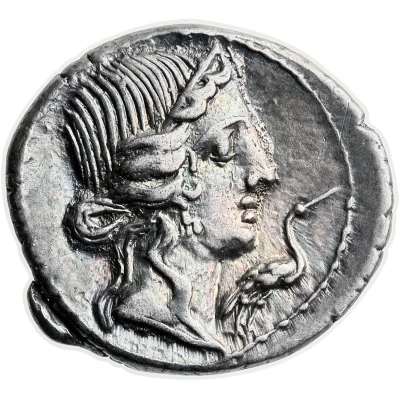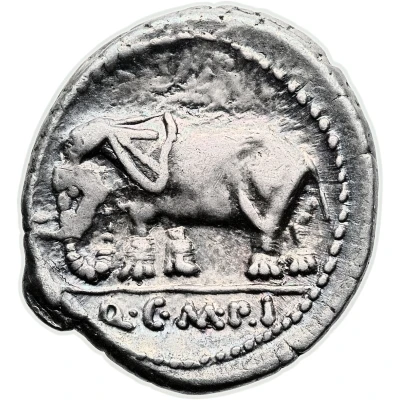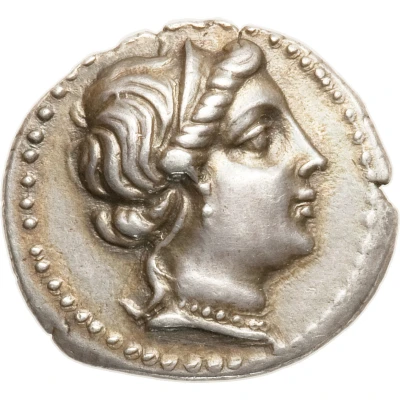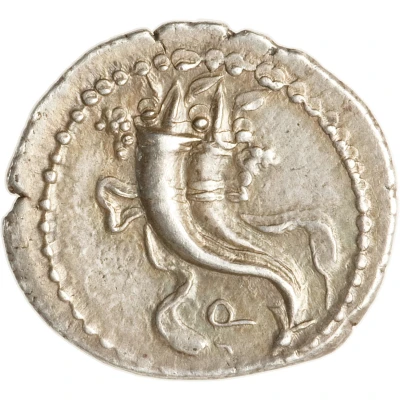


© Heritage Auctions
Denarius Caecilia: Quintus Caecilius Metellus Pius; IMPER 81 BC
81 BC year| Silver | 3.86 g | 18 mm |
| Issuer | Rome › Roman Republic (509 BC - 27 BC) |
|---|---|
| Period | Republic (509 BC - 27 BC) |
| Type | Standard circulation coin |
| Year | 81 BC |
| Value | Denarius (1) |
| Currency | Denarius of 16 Asses (141 – 27 BC) |
| Composition | Silver |
| Weight | 3.86 g |
| Diameter | 18 mm |
| Shape | Round (irregular) |
| Technique | Hammered |
| Orientation | Variable alignment ↺ |
| Demonetized | Yes |
| Updated | 2024-10-06 |
| Numista | N#66713 |
|---|---|
| Rarity index | 95% |
Reverse
Emblems of the augurate: jug and lituus; below, inscription; all within laurel-wreath.
Script: Latin
Lettering: IMPER
Translation: Imperator
Edge
Plain
Comment
The gens Caecilia was a plebeian family at Rome. Members of this gens are mentioned in history as early as the fifth century BC, but the first of the Caecilii who obtained the consulship was Lucius Caecilius Metellus Denter, in 284 BC.The moneyer here strikes as imperator in northern Italy where he was campaigning on behalf of Sulla.
Interesting fact
The Denarius coin was used as a means of payment for Roman soldiers during the Roman Republic. It was a silver coin that was valued at 10 asses, which was the standard unit of currency at the time. The Denarius coin was introduced during the reign of Julius Caesar and was used until the fall of the Roman Empire. It was a widely accepted form of currency throughout the Roman Empire and was used for trade and commerce. I hope this information is helpful! Let me know if you have any other questions.
Price
| Date | Mintage | VG | F | VF | XF | AU | UNC |
|---|---|---|---|---|---|---|---|
| ND (-81) | - | - | - | - | - | - |
Values in the table are based on evaluations by sales realized on Internet platforms. They serve as an indication only for Denarius (Caecilia: Quintus Caecilius Metellus Pius; IMPER) (81 BC) coin.



